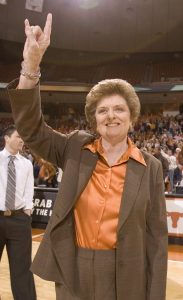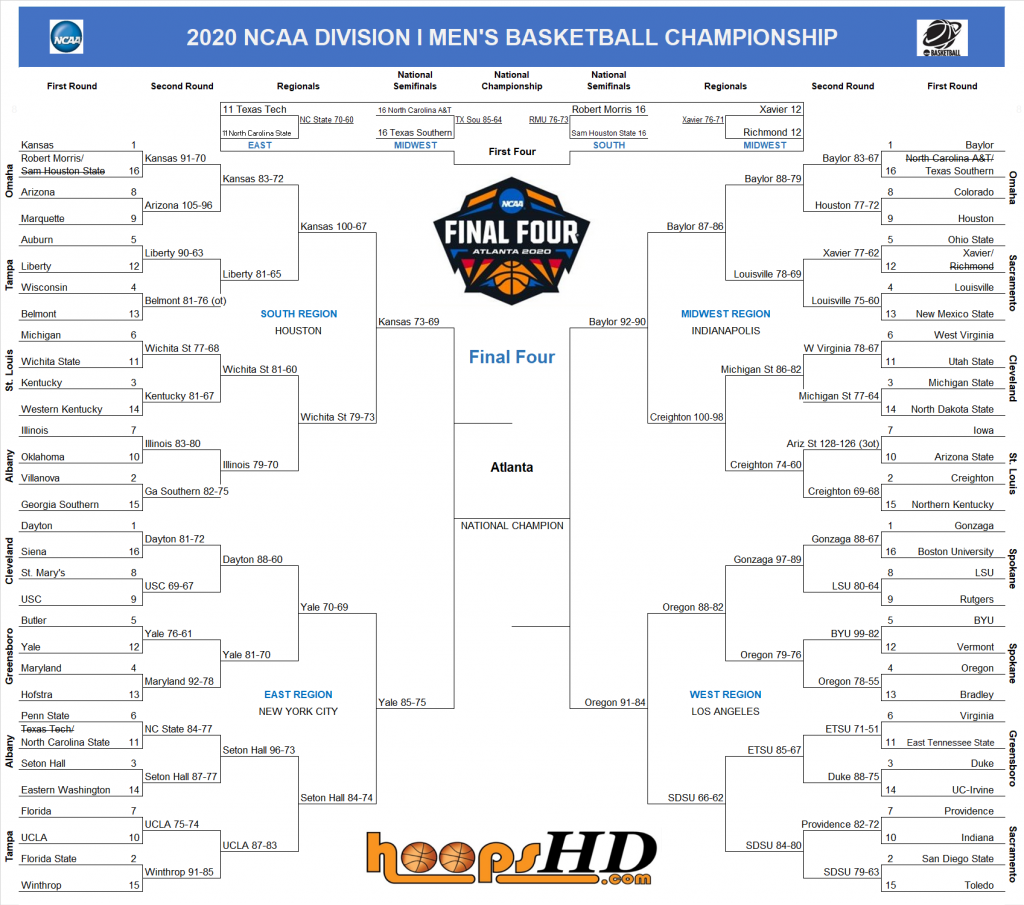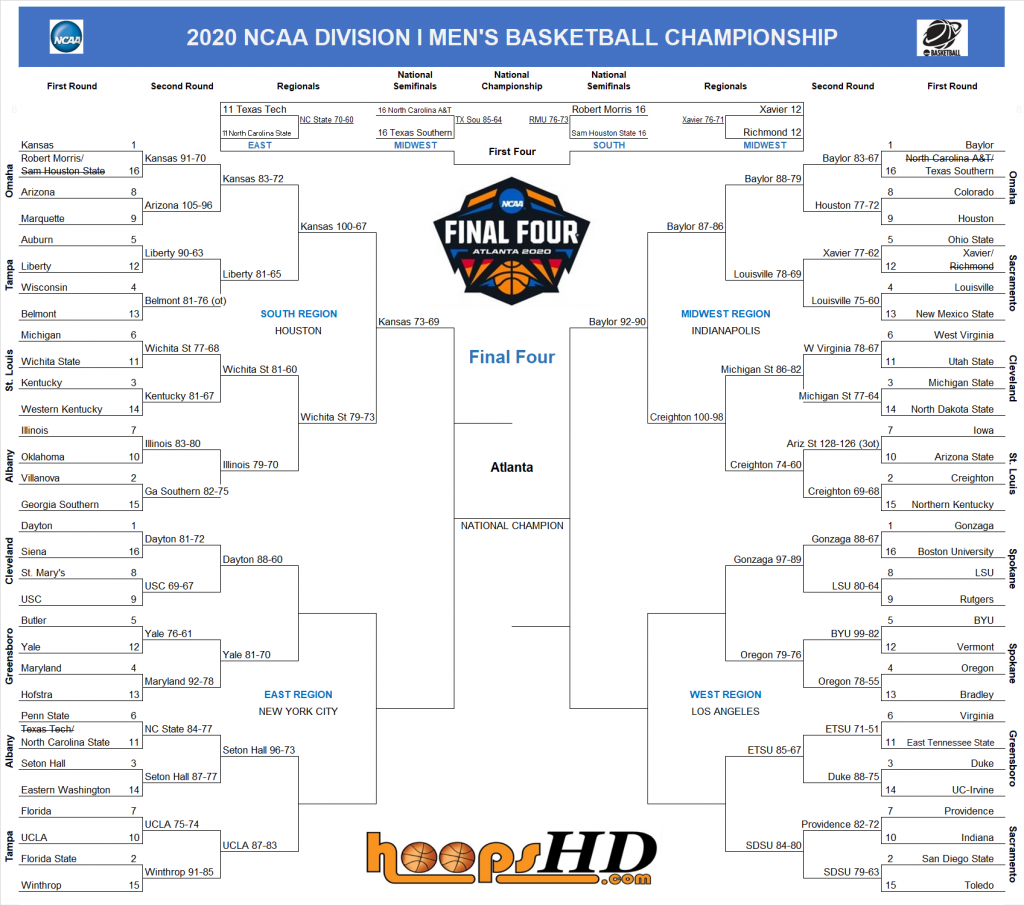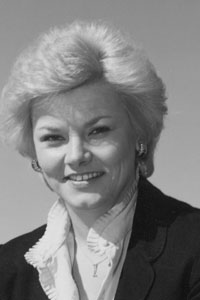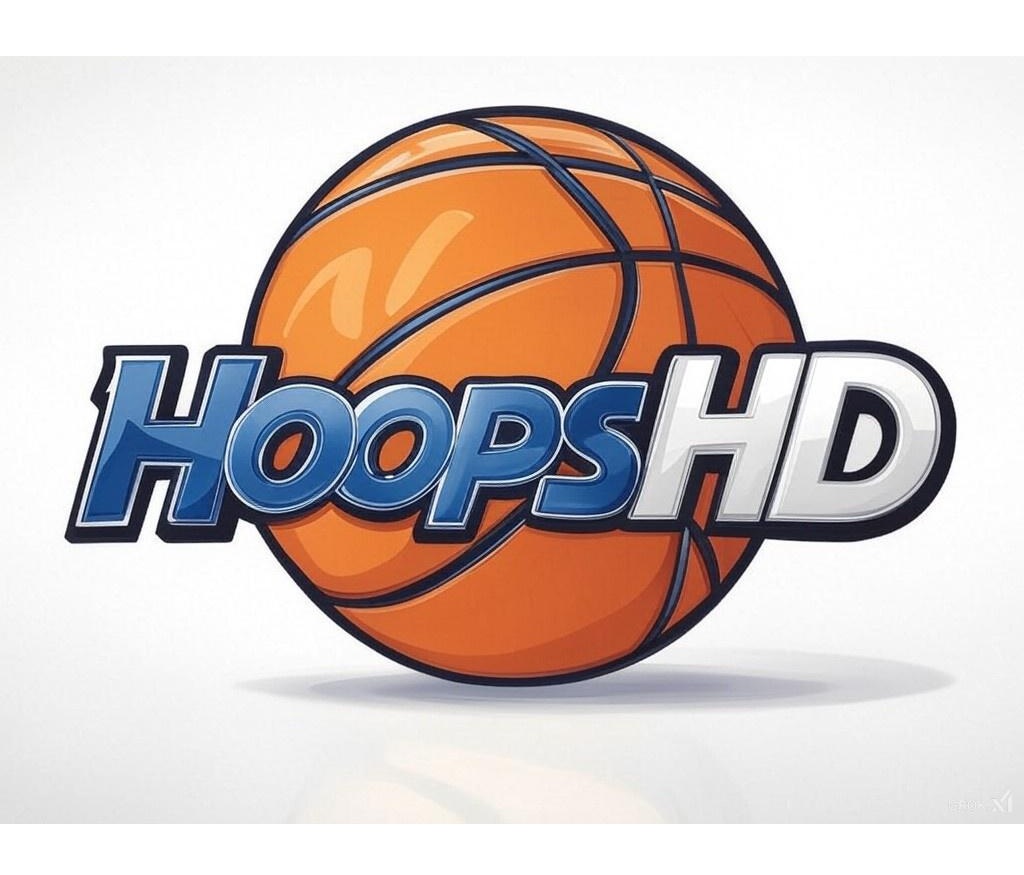In any other year early-April would be a time for reflecting on the Elite 8 and looking forward to the Final 4, but this year is not like any other year. Instead, we will spend the week reflecting on champions of the past, from a famous coach who won the 1947 NCAA title as a player to a Hall of Famer who led her team to a perfect 34-0 season in 1986. HoopsHD’s Jon Teitel concludes our 8-part series with Jody Conradt, who talked about winning the NCAA women’s tourney in 1986 and going undefeated in conference play for more than a decade.
You averaged 20 PPG as a player at Baylor: how good a player were you back in the day? The older I get the better I was! The game has changed quite a bit since I played: I grew up playing 3-on-3 because that is what the rules were in Texas. It was wonderful to stay involved with the game as it has grown.
Your mother Ann played softball and your father Charles played semi-pro baseball: who is the best athlete in the family? I would have to say that my mom might have been the best. She took up golf well after my dad did and she was good at that too. She was always very competitive while fending for herself in a family of several boys. It helps to have parents who are into sports when you grow up in a town of 1500 people.
When you were hired to be head coach at Texas in 1976 you introduced tactics such as full-court pressure, double low-posts, and a transition game: why did you take the job, and how did you develop your own coaching style? I never thought that I would coach: I wanted to be a teacher and when I had a chance to teach sports that was just a plus. It was a unique opportunity because the men’s and women’s sports at Texas had different departments. I felt that it was a sleeping giant because the women were capable of doing what the men did. Most of my role models were men because all of the games I watched on TV at the time featured male coaches. I learned a lot of things from my own coach in school growing up. We had a lot of quickness on our team so pressing was important, and we wanted to play a style that people could appreciate like pushing the ball up the court and turning defense into offense.
In the 1982 AIAW tourney title game Patty Coyle scored a career-high 30 PTS in a 6-PT win by Rutgers to snap your 32-game winning streak: how close did you come to winning the last-ever AIAW tourney game? We came pretty close but Rutgers had a veteran team that was very good. It was a totally new experience for us to travel and play on the big stage, and we relied heavily on the 30 PTS of freshman Annette Smith. I consider Annette to be the cornerstone of what we built: she was our 1st superstar and we just grew from that point.
In the 1985 NCAA tourney Lillie Mason made a bank shot at the buzzer in a 2-PT win by Western Kentucky: where does that rank among the most devastating losses of your career? It was absolutely devastating for a lot of reasons. We were ranked #1 and the Final 4 was going to be in Austin so we had sold thousands of tickets to people who thought we were going to be playing at home. It was tough to see someone else playing on our court and cutting down the nets but it gave us motivation for the following season because we only lost 1 senior so most of the team was coming back.
In the 1986 NCAA tourney title game, tourney MOP Clarissa Davis scored 25 PTS off the bench and your team set a title-game record with 97 PTS in a win over USC to become the 1st undefeated team in women’s history: how on earth did you destroy a team featuring Cheryl Miller/Cynthia Cooper, and what did it mean to you to win a title? We just steamrolled people all year long. I had a rotation of 11 players who could have started for anyone in the country: I still say that our best competition that year was during practice. It was the easiest coaching job I ever had because they were all grumpy from losing the previous year. Everyone wants to win a national championship and at the time you think it is the best thing that has ever happened. I always think about how great it was, but I also know how hard it was.
From January 1978 to January 1990 you won 183 straight conference games: how were you able to dominate the league for more than a decade? Really good players who were competitive/motivated. It is a lot harder to win every game you are supposed to win than the 2-3 games you are not supposed to win. I remember so many close games that we won: after those games there was more relief than jubilation.
You were a 6-time national COY and your 900 wins remains in the top-10 all-time: what made you such a great coach? It is redundant but really good players! Texas is a world-class institution with a great history of success in sports and that played into me being in the right place at the right time. You cannot build everything that we have built without a grand plan.
You graduated 99% of your players during your career: how much importance did you place on academics? Texas is a really competitive institution: we have more than 36,000 applicants for 6,000 spots so it is a challenge to recruit talented athletes who can also be competitive in the classroom. Back in the day the focus of every female athlete was to get a degree because there were not many opportunities to become a professional athlete, which made them focus on their studies.
In 1998 you were inducted into the Hall of Fame: where does that rank among the highlights of your career? I am the answer to the trivia question of who went into the Hall of Fame with Larry Bird! It is still unreal to me to be included with the greats of the sport and it was a tremendous individual honor.

